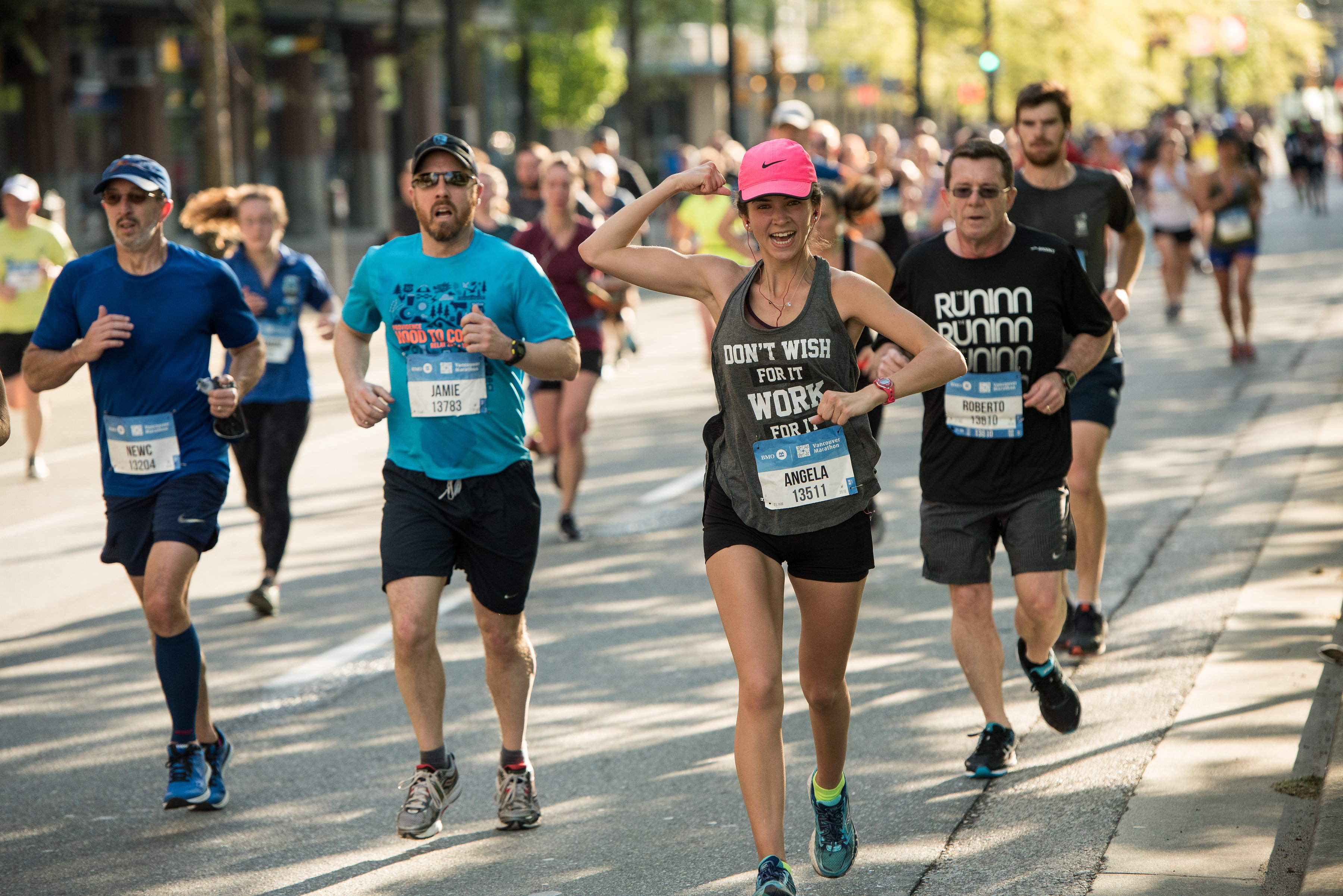By RUNVAN®
How to conquer your first 42.2KM as a beginner
Tackling your first big race can take both time and motivation; in fact, training for a Marathon can feel like an entire lifestyle-overhaul. But with some hard work and training, crossing “Run a Marathon” off your bucket-list is a more attainable feat than you’d think.
Vancouver is home to one of the most scenic and beautiful Marathons in the world and the event annually welcomes over 18,000 runners across the Finish Line. If 18,000 other runners can make their way to the BMO Vancouver Marathon Finish Line in May, so can you!
Here are 6 training tips for runners looking to tackle their first 42.2KM.
1. Track your training.
Training for a Marathon takes time, and keeping a training journal or using a fitness app to track your training runs is key. Include your daily goals, mileage, run times, heart rate, how you feel. Tracking your progress helps you stay accountable and lets you know how your body is feeling should you need to make any adjustments to your training plan.
2. Build you base mileage.
The average runner takes about six to eight months to train and build-up a base. Aim to increase your running distance gradually, increasing your weekly mileage by no more than 10%. A gradual increase in mileage helps to reduce the risk of injury and improves your endurance in a more efficient manner. Set challenging, but attainable goals for yourself, and you’ll be in Marathon-shape in no time!
Consider running a shorter distance first, such as a Half Marathon, and build your way up from there. Vancouver is home to many popular Half Marathons, including the First Half in February, the BMO Vancouver Half Marathon in May, and the Fall Classic Run in October.
Check out: Local Half Marathons hosted by non-profit event organizers RUNVAN®
3. Run three to four days a week.
Each week, aim to incorporate a range of training runs into your schedule, including at least one long run, two to three shorter, steady runs, and some speed and strength training. Long runs should be run at a slower pace, and increase gradually as you get build-up your endurance. Hills add resistance and strength to your training and improve your running form, while high-intensity speed training runs are best done in intervals. Don’t forget to add rest days in between to give your body time to recover.
4. Incorporate cross-training into your training routine.
Activities such as swimming or cycling can add a little variety to your weekly workouts, and keep things fresh! Including cross-training into your weekly routine also helps to reduce the risk of injury and works different muscle groups while resting your running muscles.
5. Invest in the right pair of running shoes.
You’ll be spending a lot of time in them, so a good pair of running shoes is essential. While it’s not necessary to buy the newest model, it is important to invest in the right pair. Find a pair of running shoes that suit your running style, foot type, and level of experience to ensure you stay comfortable and injury-free. You can receive a free gait analysis when you come by any Running Room location!
Related article: How to find the right pair of running shoes
6. Stay motivated
Training for a marathon is a journey, but running with a run crew or friend can help you stay both accountable and motivated. Plus, registering for a race gives you a date and goal to work towards! The Vancouver running community it home to many local run crews, or come join us Downtown every Thursday morning with the RUNVAN® Crew!
Vancouver is lucky to have many local races year-round, which means there are lots of opportunities to challenge yourself and see where you’re at. RUNVAN® annually organizes four events annually: First Half in February, BMO Vancouver Marathon in May, Granville Island Turkey Trot in October and Fall Classic Run in October.
Related article: What to expect from your first running race


Trackbacks/Pingbacks